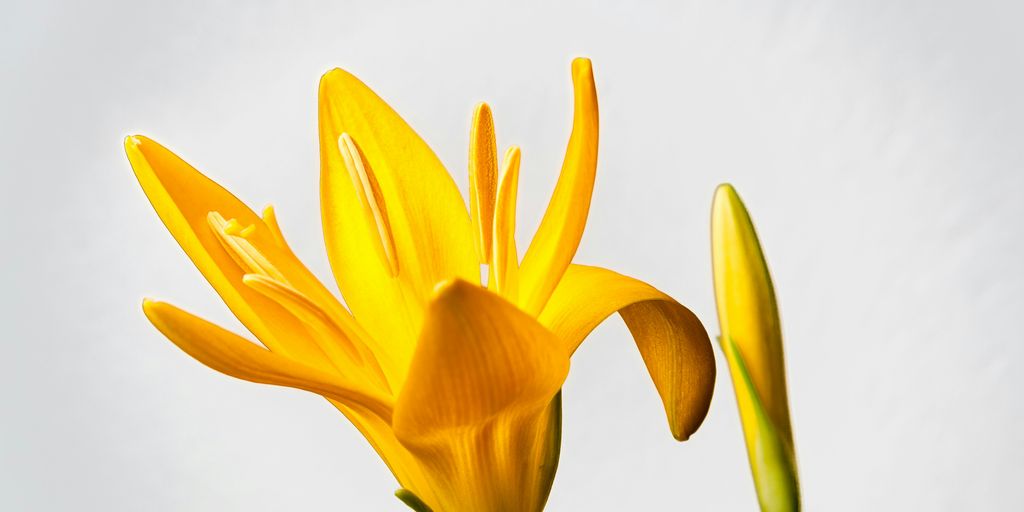Yellow perennial flowers are a fantastic addition to any garden, bringing a burst of sunshine and cheer year after year. We have chosen an assortment of 10 yellow perennial flowers for your garden.
Our selection encompasses a wide variety of plant needs, bloom times, heights, zones, and much more. Whether you are looking for something tall and striking or low and delicate, this list has something for everyone.
Key Takeaways
- Coreopsis is known for its bright yellow flowers and long blooming season.
- Daylilies are versatile and easy to grow, thriving in a variety of conditions.
- Black-Eyed Susans are hardy and attract pollinators like bees and butterflies.
- Yarrow is a drought-tolerant plant that produces clusters of tiny yellow flowers.
- Yellow Coneflowers are tall and elegant, making them perfect for the back of a flower bed.
Coreopsis

Coreopsis, also known as tickseed, is a native plant that will attract bees and butterflies to your garden. Coreopsis is drought tolerant and should be deadheaded to encourage a longer bloom time. There are many interesting varieties to choose from, including annual options.
Varieties
Coreopsis ‘Solar Dance’ has petals with pretty scalloped edges. The petals of the lance flower have a unique fringed shape. The scientific name for one variety is Lanceolata, which consists of warm yellow flowers atop tall green stems that reach up to 24 inches in height.
Benefits
- Attracts bees and butterflies
- Drought tolerant
- Adds unique texture to the garden with its delicate, fern-like foliage
Care Tips
- Plant in part sun to full sun.
- Deadhead to encourage longer bloom time.
- Suitable for drier conditions throughout the summer.
Companion Plants
Coreopsis pairs well with:
- Cestrum Plants (Orange Peel)
- Clematis Plants (Leather Flower)
- Delphinium Plants (Larkspur)
- Dianthus Plants (Pinks)
- Digitalis Plants (Foxglove)
- Echinacea Plants (Coneflower)
- Eryngium Plants (Sea Holly)
- Eupatorium Plants (Joe-Pye Weed)
- Gaillardia Plants (Blanket Flower)
- Gaura Plants (Beeblossom)
Daylily

Daylilies (Hemerocallis) are perennial flowering plants known for their vibrant and showy blooms from summer until the first frost. These flowers have six petals that form a trumpet-shaped blossom. The foliage is long and grass-like, adding an attractive contrast to the bright yellow flowers. Deadhead spent flowers and foliage to encourage additional blooming.
Daylilies flourish in zones 3 to 9, making it a safe bet for success just about anywhere. Northern regions should make sure to plant in the spring so that they have time to get established. Southern regions can plant in the spring or fall. They need full or partial sun and are resistant to drought and heat. When choosing a location for these, you have several options. Daylilies are versatile. You can edge a fence line or a sidewalk with them to create an aesthetically pleasing path. They mix well with small grasses and shrubs to create a more elaborate display.
These diurnal perennials mirror the sun. Their blooms open in the morning and wither at night, replaced by a new flower the following day. Make sure to remove the withered flower to encourage new growth. Their petals flare from its slim, cylindrical base, forming a trumpet shape. The flower has a lemony scent and is very fragrant.
Black-Eyed Susan
The Black-Eyed Susan is a quintessential summer perennial flower native to North America. Scientifically known as Rudbeckia, it produces yellow dome-shaped flowers with a contrasting black raised center. This flower offers a warm yellow hue, and the foliage is light green. This rudbeckia is one of the shortest in the family, reaching up to 24 inches tall. It is suitable for all places in the garden, including containers, and it blooms from midsummer through to fall.
Characteristics
Black-Eyed Susans are members of the sunflower family and make great cut flowers in summer bouquets. They bloom through October and love the sun. Pollinators, such as butterflies and bees, are attracted to them, and they will continue to bloom well into late summer/early fall. Leave the seed heads for the birds in winter.
Varieties
Black-Eyed Susans can be perennial, biennial, or annual depending on the variety. A couple of perennial varieties are ‘Indian Summer’ and ‘Cheyenne Sunset.’
Growing Conditions
These flowers thrive in full sun and well-drained soil. They are low maintenance, vibrant, and visually appealing options for gardens. They can be seen not only in gardens but also growing in ditches, meadows, and along hiking trails.
Yarrow
Yarrow, scientifically known as Achillea, is a perennial plant recognized for its flat-topped clusters of tightly packed flowers. This low maintenance bloom is easy to grow and is hardy in zones 3-8. The plant features feathery, fragrant, gray-green foliage that adds to its ornamental and pollinator value, making it irresistible to butterflies and bees. Yarrow is also tolerant of drought and various growing conditions, making it a versatile addition to any garden.
Tickseed
Native to most of the United States, Tickseed (Coreopsis) is known for its long-lasting, bright daisy-like blooms. Golden yellow flowers create a glorious early summer display attracting numerous butterflies, while birds eat the late summer seeds. The foliage is typically delicate and fern-like, adding a unique texture to the garden.
Yellow Coneflower
The Yellow Coneflower is best known for its long-lasting blooms and tolerance of almost everything. This flower does best in zones 5 to 9, and it craves exposure to full sun. When planted in mass, they attract pollinators and hummingbirds. The cones provide seeds for birds when they dry out too. Use the color theory method, and plant them with crimson penstemon or blue perovskia atriplicifolia.
Sunburst
The Sunburst looks similar to a daisy and can grow to be fairly tall.
COLOR CODED™ ‘YELLOW MY DARLING’ ECHINACEA
Rich yellow flowers contrast beautifully with its dark green leaves. Flowers age to an attractive creamy yellow. A large volume of petals to make the flowers last for a long time!
- Full to Part Sun
- Zones: 4-8
- Blooms Early to Late Summer
Pollinators
Pollinators are attracted to these brightly colored flower petals.
Scientific Name
Scientific Name: Echinacea paradoxa
This is the only Echinacea species to feature yellow flowers instead of the traditional purple. It is a herbaceous perennial that produces warm yellow drooping petals, with dark brown cones as the center stage. Known as the Yellow Coneflower, it is one of the most attractive native American flowers. It has dark green foliage with narrow leaves, allowing the flower to be the star of the show.
Goldenrod
Perfect for a meadow garden, goldenrod (Solidago) has mustard yellow flowers that form plume-like clusters at the top of each stem. They are a sign of fall, adding that golden hue when many gardens are dull and brown, says Mary Phillips, head of Garden for Wildlife and Certified Wildlife Habitat programs at the National Wildlife Federation. The native plant is considered a keystone plant, meaning it supports many species of wildlife, including birds, butterflies, moths, and bees, says Phillips.
Evening Primrose
Fill your garden with the scent of fresh lemons by planting evening primrose (Oenothera biennis). The delicate flower blooms later in the afternoon and evening to attract night pollinators. Bats and moths find their way to these flowers. These are long flowering plants because of the number of buds they produce.
Growing Conditions
- Zone: 3 to 8
- Size: 3 to 5 feet tall x 2 to 3 feet wide
- Light: Full sun
- Soil: Average soil
Benefits
- Attracts night pollinators like bats and moths
- Long flowering period due to numerous buds
- Pleasant lemon scent
Planting Tips
- Choose a location with full sun.
- Ensure the soil is average and well-draining.
- Space plants 2 to 3 feet apart to allow for growth.
- Water regularly but do not overwater.
Buttercup
Buttercups are a charming addition to any garden, known for their bright yellow blooms that can light up any space. These perennials are not only beautiful but also quite resilient.
Planting and Care
When planting buttercups, it’s essential to place them in well-drained soil and ensure they receive plenty of sunlight. They thrive best when planted in the fall, about six inches apart, and at least five inches deep to protect from winter conditions.
Benefits
Buttercups are an early source of nectar for bees in the spring, making them an excellent choice for gardeners looking to support local pollinators. Additionally, they can serve as a groundcover under taller perennials, adding a layer of beauty and functionality to your garden.
Companion Planting
Buttercups can be a part of a diverse garden ecosystem. They pair well with other perennials and can be used in companion planting to deter pests. Consider planting them alongside sunflowers, bee balm, chrysanthemums, petunias, basil, and calendula for their pest control and companion planting benefits.
Yellow Iris

Yellow Iris, particularly the Yellow Dwarf Iris (Iris danfordiae), is a woodland perennial that brings charm to any garden. Each of the petals has a darker yellow center and is sometimes spotted, adding a unique touch to its appearance. Its adaptability to partial shade makes it an excellent choice for naturalizing and adding a touch of sunshine to woodland settings.
Growing Conditions
- Zone: 5 to 8
- Size: 6 inches tall x 6 inches wide
- Growing conditions: Part shade; well-drained soil
Companion Plants
Companion plants for gardenias include hostas, ageratum, heuchera, azalea, camellia, rhododendron, and holly. These plants offer color, texture, and contrast in various light and soil conditions.
Zaki Infitar is the driving force and creative mind behind GreenBuilt.co. As a self-taught gardener with an unwavering passion for all things green, Zaki’s journey into the world of gardening is a testament to his dedication and love for nature.

